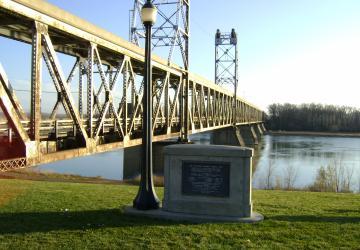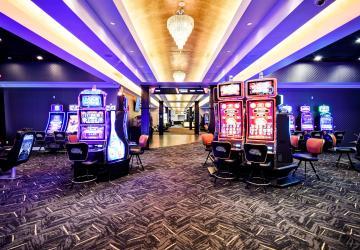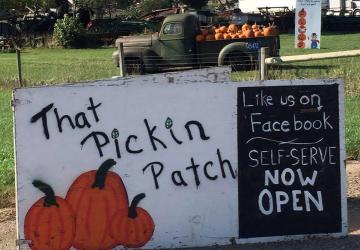Flandreau, one of the oldest cities in the state, is a small but progressive community, located about 40 minutes north of Sioux Falls, seven miles east of Interstate 29. During the “Dust Bowl” era, Flandreau was commonly referred to as the “Garden Spot of the Dakotas.” While the weather of the northern plains is the stuff of legend, living in southeastern South Dakota offers many advantages – four distinct seasons, allowing a wide variety of recreational opportunities; low crime rates, and one of the lowest tax rates in the nation. Located on the banks of the Big Sioux River, the city continues to flourish. Our close proximity to Sioux Falls, one of fastest growing urban areas in the United States, allows the luxury of small town living with convenient access to products and services of a larger city.
History
Indians have inhabited Moody County for thousands of years. The large number of arrowheads, hatchet and hammerheads and other Indian artifacts found are evidence of their presence. Indians traversed this prairie and river-bottom land to fish, hunt and trap for furs. Many traded their furs for needed items. In 1701 a trading party in the employ of French explorer Le Sueur visited the Big Bend in the river well known as a favorable camping spot to Indians traveling through Dakota. There on a high hill above the river they built a trading post. In 1822, Joseph La Framboise, a French explorer who had built a trading post on the Missouri at Ft. Pierre, came to the Big Bend and built a trading post on the south bank of the Big Bend near the present site of Flandreau, operating continuously until 1840. The 1851 treaty ceded land from the falls of the Big Sioux to Big Stone Lake. In 1857 the Dakota Land Company laid out a town site northeast of the present site on the north bank of the Big Bend. When the Santee families moved from Nebraska to take up homesteads they located along the river as far as twenty miles to the north and south of the old town site. They called the settlement Riverbend. Fifteen families walked from Santee, Nebraska, in March 1869. One woman perished in a snowstorm on the walk to the Big Bend. They trapped, hunted, fished and began farming, but for the next few years they struggled to improve their conditions without government aid. Flandreau has been in different locations and has had different names and spellings since its founding in the spring of 1857 by the Dakota Land Company of St. Paul, Minnesota. The company laid out the town site probably on the Big Bend of the Big Sioux River several miles east and north of Flandreau’s present location. Under pressure from Chief Smutty Bear and the Yankton Sioux, the site was abandoned and destroyed after one year.
Flandrau had been instrumental in securing the rescue of two captives of Inkpaduta of the Wahpekute tribe after the Spirit Lake massacre in northwestern Iowa. The site was name for Charles E. Flandrau, a Sioux agent and territorial judge. Shortly before Flandrau was founded, the Indians had fled over the Big Sioux at Big Bend where one of the captives, Mrs. Thatcher, was killed. Friendly Indians rescued the remaining hostages with money raised by Flandrau. He was later an organizer of the defense of New Ulm, Minnesota, against the Indian uprising in 1862.
The Indians called the first post office in 1871 River Bend. From January to July 1873 the post office was called West Bend with F.W. Pettigrew as postmaster. It was later moved to the new site of Flandreau that had been homesteaded by Pettigrew and where the first legal office was located. When the new village was platted, the name was spelled Flandreau. In 1880 the townspeople made efforts to omit the “e” in accordance with the correct spelling of Judge Flandrau’s name. In 1891 the Moody County Enterprise returned to the previous spelling with no explanation for changing the name a second time. The Flandreau Herald in 1882 took up and continued the spelling of Flandreau, as we know it today. The city of Flandreau was official organized in 1879. Records indicate that it is the oldest town in the county. In January 1880, the first train was run into Flandreau by the Southern Minnesota line of the Milwaukee Railroad. The company continued the line to Egan, which was organized in 1881. Egan and the surrounding area made a strong bid for the county seat but was defeated in a county election. Flandreau was officially declared the county seat in 1881 and the first county courthouse was erected in 1882.
Recreation/Community Events
The Flandreau Aquatic Center, designed by Short Elliott Hendrickson, Inc. and constructed by G.A. Johnson Construction, both of Sioux Falls, was completed in May 2004. This recreation initiative was funded through a grant approved by Governor Bill Janklow and local funds. Amenities such as zero entry” pool, slides, diving board and lap lanes were provided through the fund raising efforts of the Flandreau Aquatic Center Committee and the generosity of the local community.
Crystal Theater built in 1913 – One of oldest theaters in South Dakota offering live performances – 215 E. Second Avenue
Japanese Gardens from 1919 – Dance Pavilion with hardwood floors – Flandreau City Park – 1 mile East of Flandreau
St. Vincent Hotel from 1897 – Second oldest continually operated hotel in South Dakota – 100 N. Wind Street
Thatcher Monument pays tribute to Mrs. Joseph Thatcher, a captive of the Spirit Lake Massacre, who was drowned in the Big Sioux River – Flandreau City Park, 1 mile East of Flandreau.
Royal River Casino has many different amenities, such as live music and entertainment in the Royal Room, which has featured many famous artists, comedians and musicians across many different genres. The Royal Feast buffet is one of two restaurants at the casino featuring many comforting dishes that will appease any appetite.
The original site of the Flandrau Mill, built in 1878, is today one of the favorite places to fish with area anglers. Located on Crescent Street, about two blocks north of Second Avenue, the Flandreau Dam on the Big Sioux River provides a popular recreation outlet.
Brookings, home of South Dakota State University and Madison, home of Dakota State University, are within a quick 30-minute commute. Other educational opportunities are available in the Sioux Falls area.
Contact Information
- 1005 W. Elm Avenue, PO Box 343, Flandreau, SD 57028-0343
- Phone: 605-997-2492
- Fax: 605-997-2915
- Email: cityadministrator@flandreau.org
- www.cityofflandreau.com















